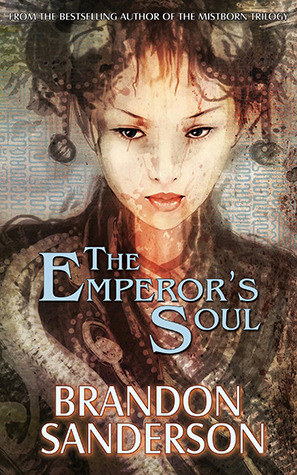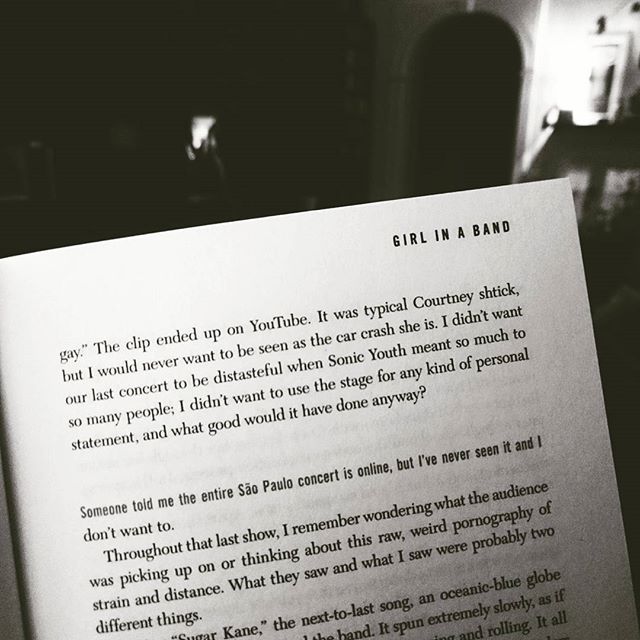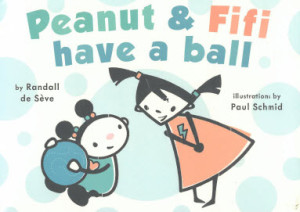What I watched: The March 8, 1949 episode of Howdy Doody. This episode would have aired in the afternoon on NBC, and is available to view on YouTube. The episode starred “Buffalo” Bob Smith as both himself and the voice of Howdy, with Bob Keeshan as Clarabell and E. Roger Muir directing.
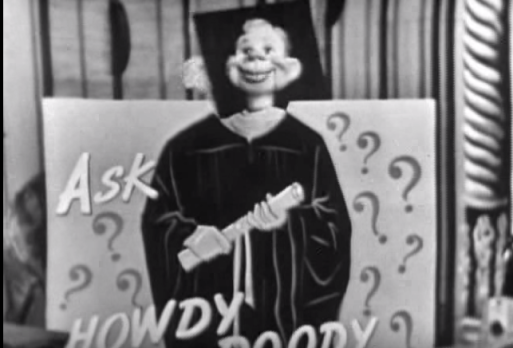
Man, they’ll give a degree to anyone these days.
What happened: Howdy Doody begins, as usual, with Buffalo Bob leading the Peanut Gallery in a bewildering, disharmonious chorus of “It’s Howdy Doody Time.” Howdy begins the show by announcing he has a surprise for everyone. Bob wastes some time by going into the audience and asking the kids if they know what Howdy has planned, and quietly shutting down all their guesses. In the end, the surprise is Howdy standing behind a cut-out of a gown in a graduation cap, meaning that he’ll answer viewer letters. It’s kind of a shitty surprise.
Bob tells the television audience that they can write in and get Howdy to deal with their problems — but he can’t help them with their homework, because that would be wrong. (This point is belaboured a few more times.) His first piece of advice is to “start every day with a song”, which he proceeds to do. The first real listener letter, and the one that takes up the bulk of the episode, is from a young girl who wants to know what it’s like to be in the movies. Howdy and Bob answer this by taking a young girl from the audience. Her name is Sandra, and she looks as terrified as every other child on Howdy Doody, but she at least can speak clearly. Sandra is placed in a chair, draped in an ermine gown that allegedly came from the wardrobe of Jennifer Jones, and given a script to read. Buffalo Bob takes the role of director, and Clarabell mans the camera.
The script is a mock version of “Romeo and Juliet” — not really a parody, just a jokey dialogue with the characters identified as the leads of Shakespeare’s play. Howdy plays Romeo and Sandra Juliet, which is great for those of you into children romancing puppets. After all of this is done, it turns out Clarabell forgot to load the film into the camera, but the gang does manage to scrounge an audio recording of Sandra’s performance. Little Sandra finally gets to sit down, but not before Bob gets her name wrong. This is followed by the usual old comedy film segment, featuring Markie McGuire as “The Lindbergh of Toureville”, with Bob reading the captions and following along with the story for the kids who can’t. The show concludes with Bob and Howdy asking kids to write in, and promising more response to their letters the following episode.
What I thought: If Howdy Doody is good at anything, it’s filling time. This is not a total insult: as an instructor, I often found it hard to fill 80 minutes of lecture time twice a week. Very little happens in this half hour — it’s a mailbag show, and they only answer one letter! — but I was still surprised when I saw that twenty minutes had gone by. The little stalling tactics that Buffalo Bob does, like the repetitive audience interaction (perhaps necessary when dealing with young children) are absolutely vital skills for putting on three live shows a week.
Even though this episode is particularly thin, there are some startling moments of weirdness. For one thing, there are multiple moments that would seem to be cross-promotion for the Jennifer Jones movie The Portrait of Jenny — the letter-writer specifically identifies Jones as her inspiration, and it just so happens that her movie is opening in New York that weekend and the show has one of Jones’ outfits backstage. But The Portrait of Jenny is an adult-aimed fantasy romance — it’s hard to see much of an overlap between it and the Howdy Doody audience. I suppose film advertising was also in a fairly primitive state. Maybe the local theatre owner just cornered Bob Smith at a party.
This episode is also a very instructive early example of how children’s television teaches kids how to relate to media. The letter writer’s dreams of Hollywood are never challenged or tempered — indeed, an obsession with stardom is taken to be entirely natural. By placing cameras and a director in frame, Howdy Doody presents an idealized version of how film (and television) is made, with the director and script posed as authorities. It must have been slightly surreal for the peanut gallery to sit there and watch two sets of cameras film the creation of a film — maybe a bit like that old 1936 RCA video.
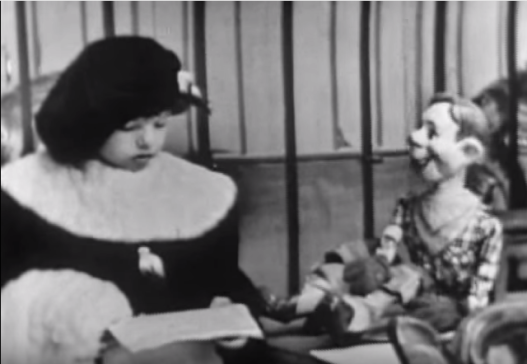 “I want a divorce.”
“I want a divorce.”
In a more minor key, this episode also teaches girls how to be feminine, or more precisely how to perform femininity. Buffalo Bob drapes little Sandra in fur, instructing her as to how valuable and desirable it is, and literally gives her a script in which she is the gently chiding, straight-laced romantic partner to an oafish man. This is what it is to be a woman in postwar America: put on an expensive costume, read the script, and try to put up with the dumb cowboy puppet you married. That may be a little overdramatic for a kid’s show running low on inspiration, but the dual-natured character of the starlet will be a common one on television, and this is a foreshadowing of the way that TV programs gendered desire.
Coming up next: Admiral Broadway Revue ponders the magic of radio.
Advertisements Share this: